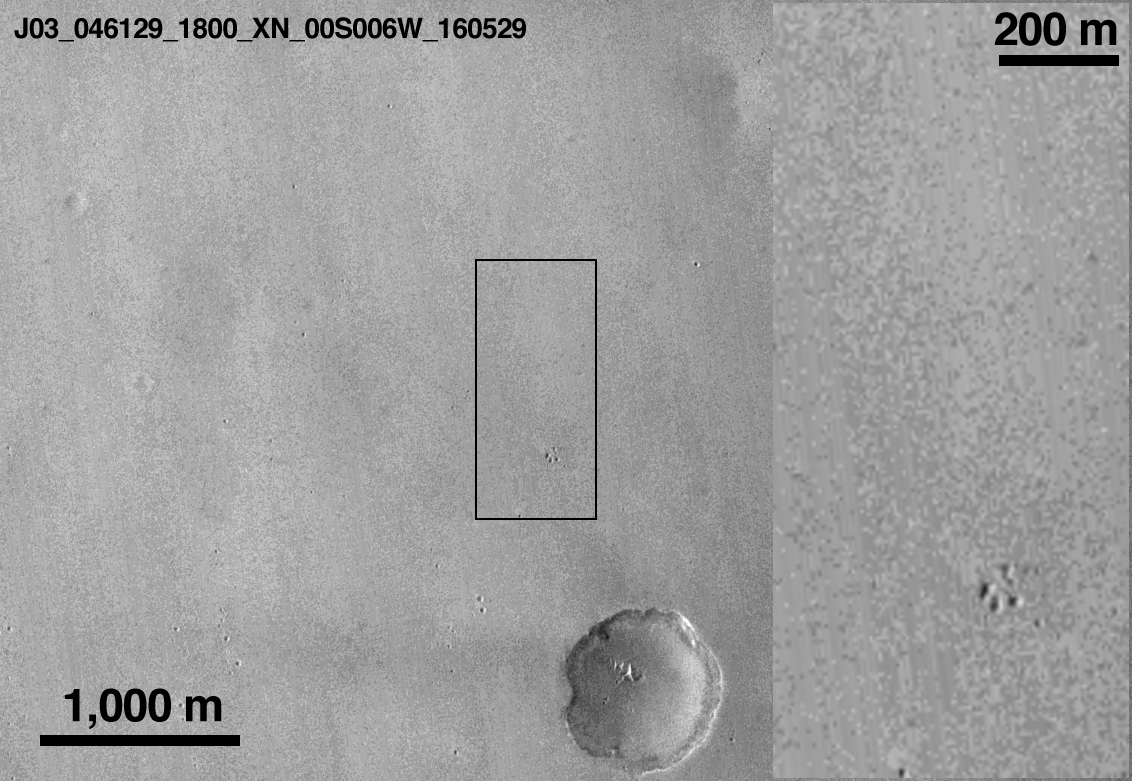ExoMars and Schiaparelli
Discussion
ESA's ExoMars orbiter and Schiaparelli lander are due to arrive at Mars over the weekend - event schedule is in the link below
http://www.esa.int/Our_Activities/Space_Science/Ex...
http://www.esa.int/Our_Activities/Space_Science/Ex...
Not looking good 
"Displays in mission control indicate the antenna in Pune, India, lost Schiaparelli's carrier signal at some point in the final moments of descent. The lander was programmed to switch off its transmitter to conserve power a few minutes after landing.
Simultaneous with its critical orbit insertion burn, the Trace Gas Orbiter was recording telemetry from Schiaparelli as it entered the Martian atmosphere, and should be able to play back the data to Earth once its engine firing is complete and the craft emerges from behind Mars."

"Displays in mission control indicate the antenna in Pune, India, lost Schiaparelli's carrier signal at some point in the final moments of descent. The lander was programmed to switch off its transmitter to conserve power a few minutes after landing.
Simultaneous with its critical orbit insertion burn, the Trace Gas Orbiter was recording telemetry from Schiaparelli as it entered the Martian atmosphere, and should be able to play back the data to Earth once its engine firing is complete and the craft emerges from behind Mars."
"The carrier signal from Schiaparelli recorded by Mars Express abruptly ended shortly before landing, just as the beacon tone received by a ground-based radio telescope in India stopped in real-time earlier today.
Paolo Ferri, head of ESA's mission operations department, just gave an update on the situation.
"We saw the signal through the atmospheric phase -- the descent phase. At a certain point, it stopped," Ferri said. "This was unexpected, but we couldn't conclude anything from that because this very weak signal picked up on the ground was coming from an experimental tool.
"We (waited) for the Mars Express measurement, which was taken in parallel, and it was of the same kind. It was only recording the radio signal. The Mars Express measurement came at 1830 (CEST) and confirmed exactly the same: the signal went through the majority of the descent phase, and it stopped at a certain point that we reckon was before the landing.
"There could be many many reasons for that," Ferri said. "It's clear these are not good signs, but we will need more information."
The newly-arrived Trace Gas Orbiter recorded detailed telemetry broadcast by Schiaparelli -- not just the beacon signal -- and that data should be beamed back to Earth overnight, he said.
"This is fundamental because we should remember that this landing was a test, and as part of the test, you want to know what happened," Ferri said.
Officials hope to share more on what they know about Schiaparelli's fate in a press conference tomorrow at 0800 GMT (4 a.m. EDT)."
Paolo Ferri, head of ESA's mission operations department, just gave an update on the situation.
"We saw the signal through the atmospheric phase -- the descent phase. At a certain point, it stopped," Ferri said. "This was unexpected, but we couldn't conclude anything from that because this very weak signal picked up on the ground was coming from an experimental tool.
"We (waited) for the Mars Express measurement, which was taken in parallel, and it was of the same kind. It was only recording the radio signal. The Mars Express measurement came at 1830 (CEST) and confirmed exactly the same: the signal went through the majority of the descent phase, and it stopped at a certain point that we reckon was before the landing.
"There could be many many reasons for that," Ferri said. "It's clear these are not good signs, but we will need more information."
The newly-arrived Trace Gas Orbiter recorded detailed telemetry broadcast by Schiaparelli -- not just the beacon signal -- and that data should be beamed back to Earth overnight, he said.
"This is fundamental because we should remember that this landing was a test, and as part of the test, you want to know what happened," Ferri said.
Officials hope to share more on what they know about Schiaparelli's fate in a press conference tomorrow at 0800 GMT (4 a.m. EDT)."
Toaster said:
MartG said:
Luck - NASA did not alter MRO's orbit to cover the area so, while it would sooner or later have been able to image the area, it was a matter of luck that it could do so within hours of the landing attempt
Erm no I don't think so luck implies that you have no idea where the craft was in relation to the orbiter, ESA knows what the trajectory was and a calculation can be made from the telemetry. This is the MRO's path and if it had been in area it could not see then NASA would have been able to say "in x days weeks we will be able to take a view" In the same way Luck does not come in to it. ESA state:
"A closer look at these features will be taken next week with HiRISE, the highest-resolution camera onboard MRO. These images may also reveal the location of the front heat shield, dropped at higher altitude." So this means that more is known about what they are doing than"Luck"
http://www.esa.int/Our_Activities/Space_Science/Ex...
Oh and you can find the MRO's position here http://mars.nasa.gov/mro/mission/whereismro/
Toaster said:
MartG said:
As usual you're missing the point - yes, as I said, MRO would be able to image the site at some point in time, as NASA knew exactly where it was. However, as I also said, it was luck that MRO was able to image the site in daylight so soon after impact. MRO is in a sun-synchronous polar orbit so it is possible that a delay of several days may have occurred before such an image could be taken.
Luck does not come in to it, the orbiter was there. had the capability to take low re images these were processed and the area found where the objects are and will at a later date have a Hi res image taken and processed. Had it taken the images a day later is that 'bad luck'?So in essence thats not luck thats Science, was it luck or science there is a MRO in orbit anyway? Was it luck or science ESA knew where the lander entered the atmosphere and shared it with NASA (NASA wouldn't have known exactly where it was it still had to be found) .
Next you will be telling us that the MRO controller had a lucky rabbits foot and thats why they spotted it so quickly

Article about the crash - says software may be to blame
http://www.nature.com/news/computing-glitch-may-ha...
http://www.nature.com/news/computing-glitch-may-ha...
Eric Mc said:
I was reading the other day on what happened the NASA Mars Polar Express probe - which crashed when attempting to land. The accelerometer on board the craft mistook the jolt of the heatshield jettisoning or the parachute release as being "the landing" and therefore switched off the landing rockets when it was still a few thousand feet up.
Schiaparelli may have suffered a similar fate.
Sounds plausible - jolt from rockets firing mistakenly interpreted as touchdownSchiaparelli may have suffered a similar fate.
Eric Mc said:
Do we know when the high resolution images of the crash site will be available?
Now 
http://www.jpl.nasa.gov/spaceimages/details.php?id...
Gassing Station | Science! | Top of Page | What's New | My Stuff







